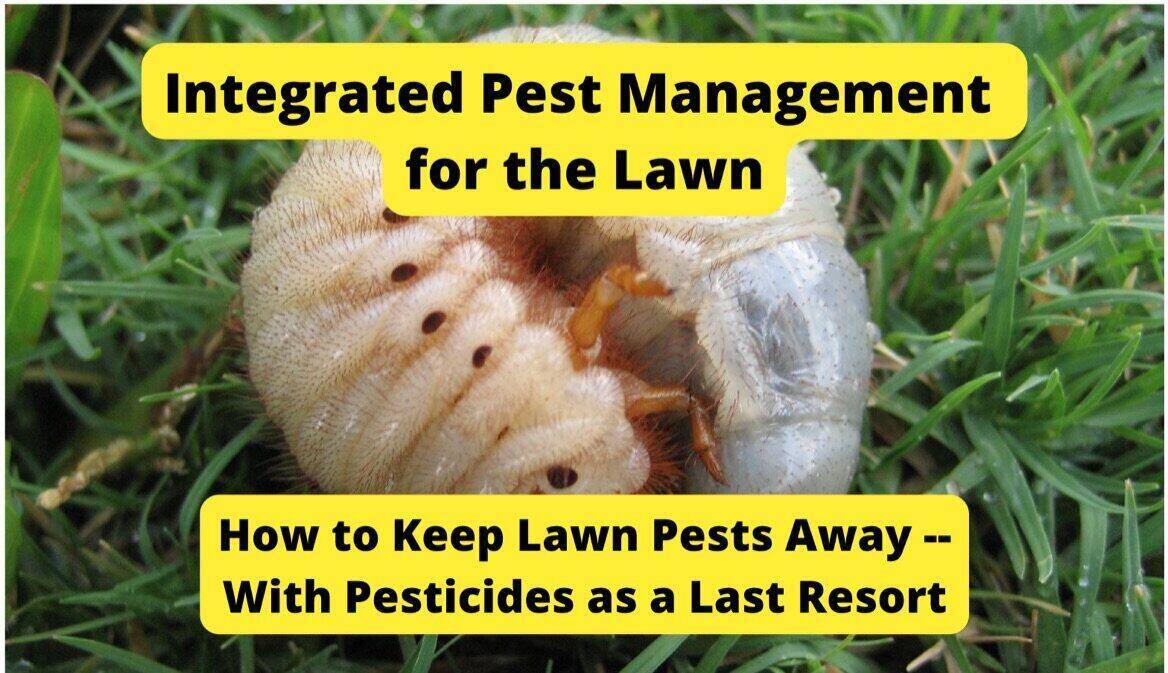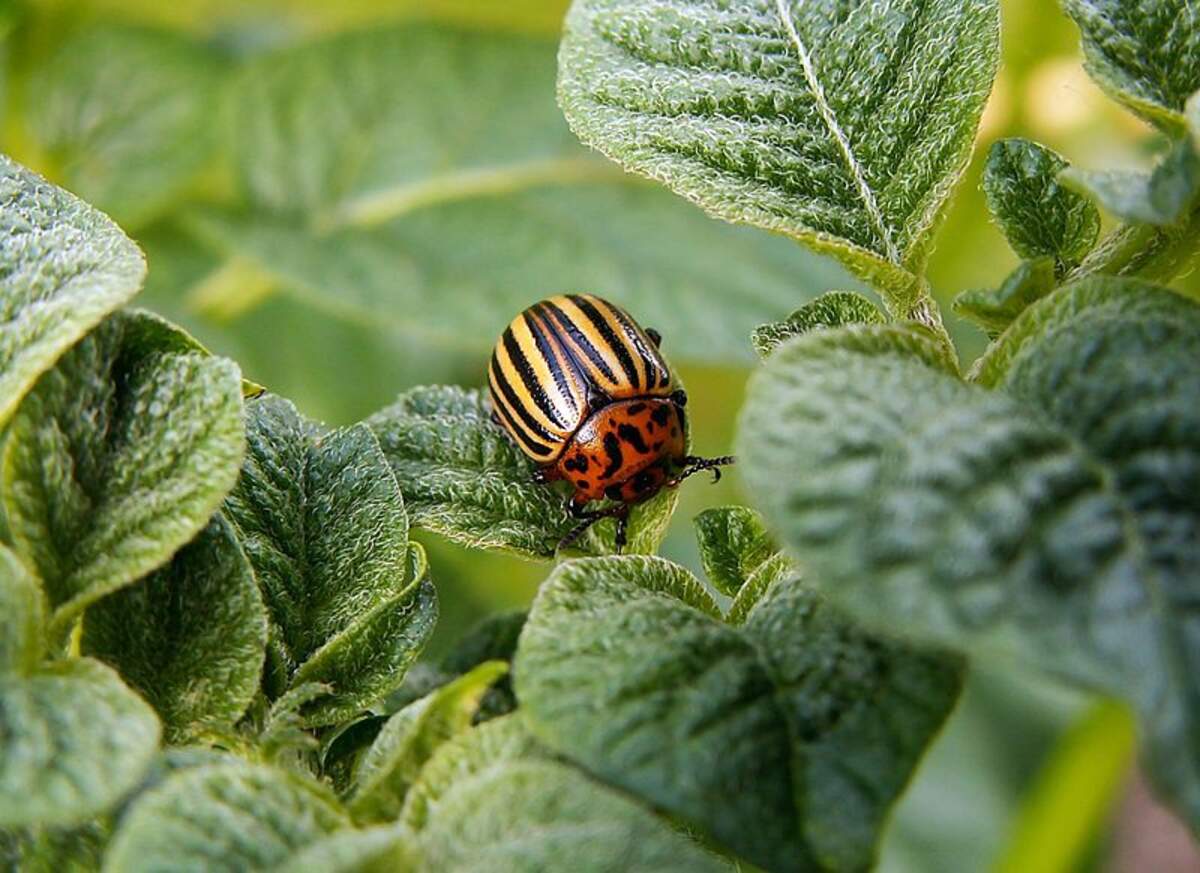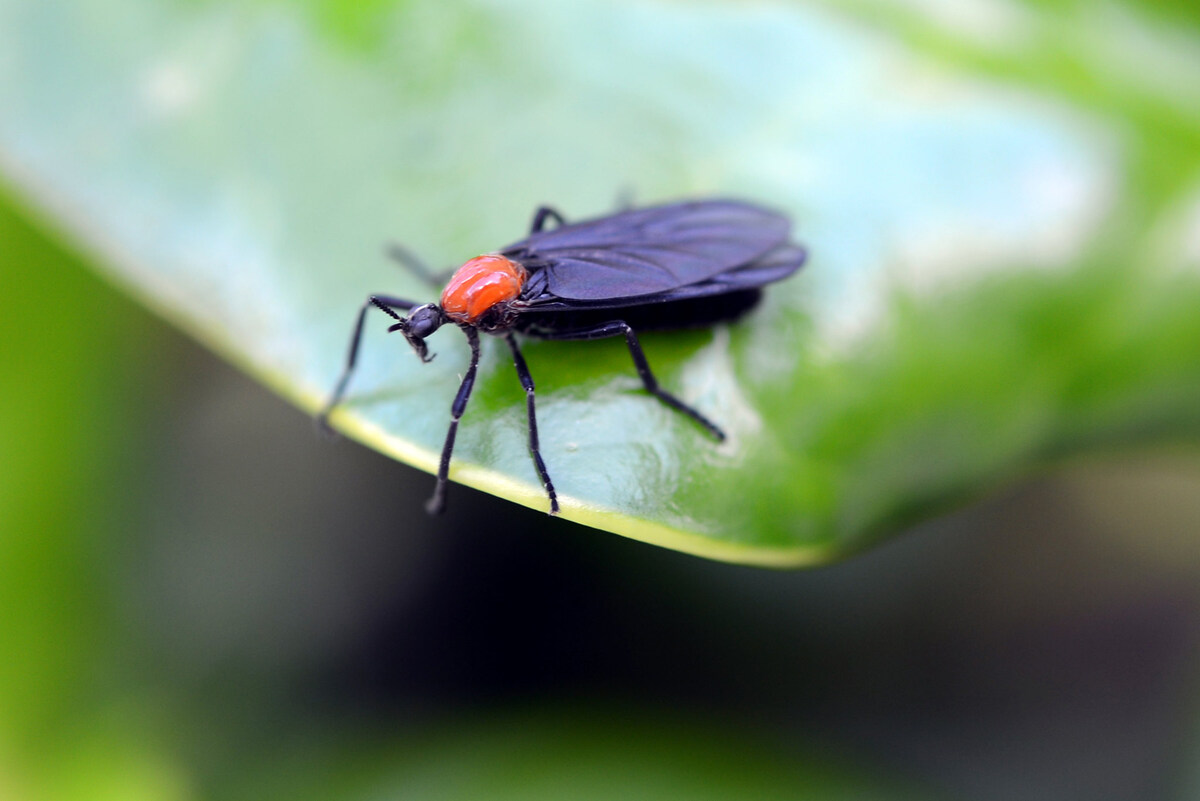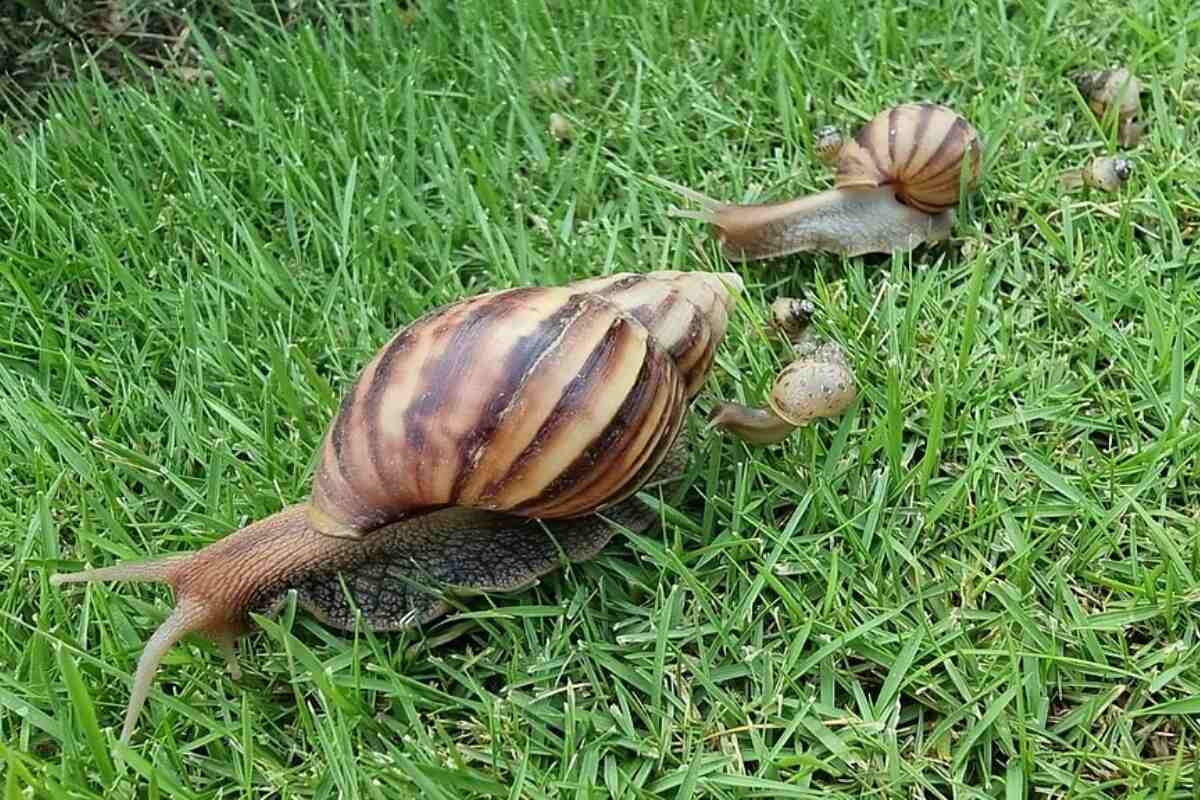
Integrated Pest Management (IPM) for gardens protects your crops from pests and toxic pesticides. IPM is an eco-friendly system that controls pests and limits their damage by using fewer pesticides. Its arsenal combines biological, cultural, mechanical, and chemical practices you can easily learn to use in your garden.
Integrated Pest Management is cleaner and safer for humans, pets, wildlife, and the environment. The best part: You’re already using some IPM components without even knowing it! Read our guide to learn the most effective IPM methods and how to implement Integrated Pest Management in your garden step-by-step.
- What is Integrated Pest Management?
- How to Implement Integrated Pest Management in Your Garden
- Integrated Pest Management Practices for Gardening
- Pros and Cons of Integrated Pest Management
- Integrated Pest Management for the Home
- Integrated Pest Management for Your Lawn
- FAQ About Integrated Pest Management
What is Integrated Pest Management?
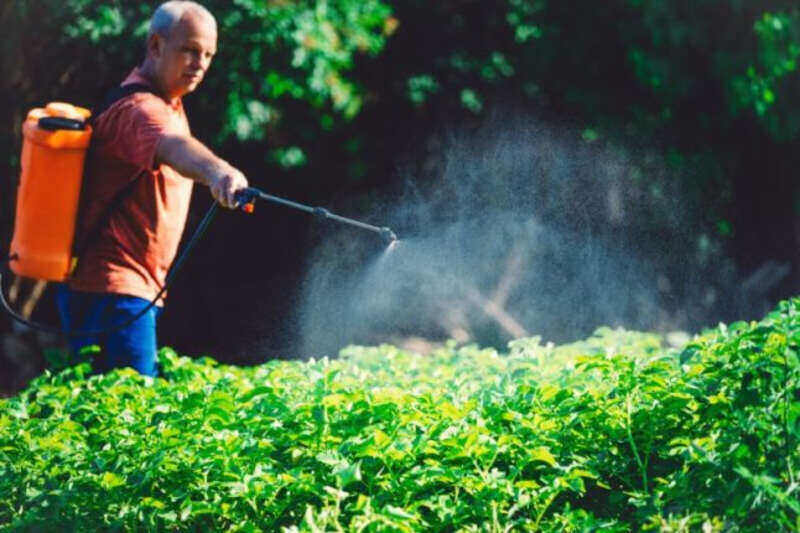
Integrated Pest Management is a science-based approach to controlling pests. It manages insects, weeds, fungal diseases, and mammals using a mix of eco-friendly pest control techniques, such as:
- Changes in cultural practices
- Habitat manipulation
- Mechanical control
- Biological control
- Chemical control
The key IPM principle is to control pests in a manner that is safe for humans and the environment. This leads to IPM using chemical pesticides only as a last resort. They come into play for severe infestations when other IPM practices prove ineffective.
IPM also comes with 3 basic rules that weight heavy for your pest management strategy success (you’ll also find among the IPM steps to follow):
- Know and monitor garden pests.
- Set an action threshold.
- Focus on prevention.
How to Implement Integrated Pest Management in Your Garden
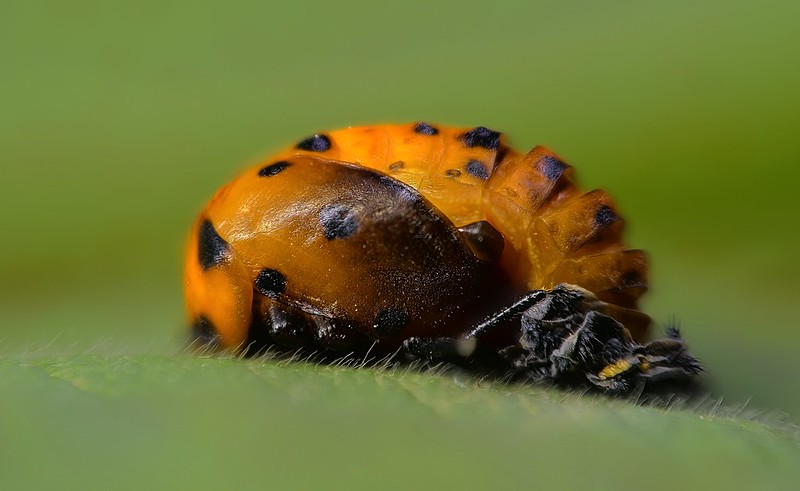
Follow the seven steps of Integrated Pest Management to apply IPM practice successfully and keep your garden pests under control.
Step 1: Identify Pests
What is the first thing you should do when you detect the presence of a pest? Identify it and ensure it’s a pest, not a beneficial insect.
Garden pests vary by the plants you’re growing and season. Start your IPM program by getting to know the pests that affect each crop and what their damage looks like.
Keep in mind that insect pests change appearance and behavior during their lifecycle. Learn to spot them at any stage. Know when they do the most damage and when you can apply pest control practices with good results.
Find out what attracts pests to your vegetable garden and the natural enemies you can use to manage them.
Note: Only about 1% of the insects in your garden are pests you need to control. The rest are beneficial insects (like pollinators and pest predators) or simply do no harm.
Take time to learn about the beneficial insects in your garden. If you protect and support them, beneficial insects support your plants. Those who are natural enemies to pests can help you control the nasty insects.
Pro tip: You don’t need to be a pest expert. Reach out to the local Extension Office. They’ll help you identify the insects and diseases you’re unsure of and advise on the proper control measures to take.
Step 2: Monitor Pests
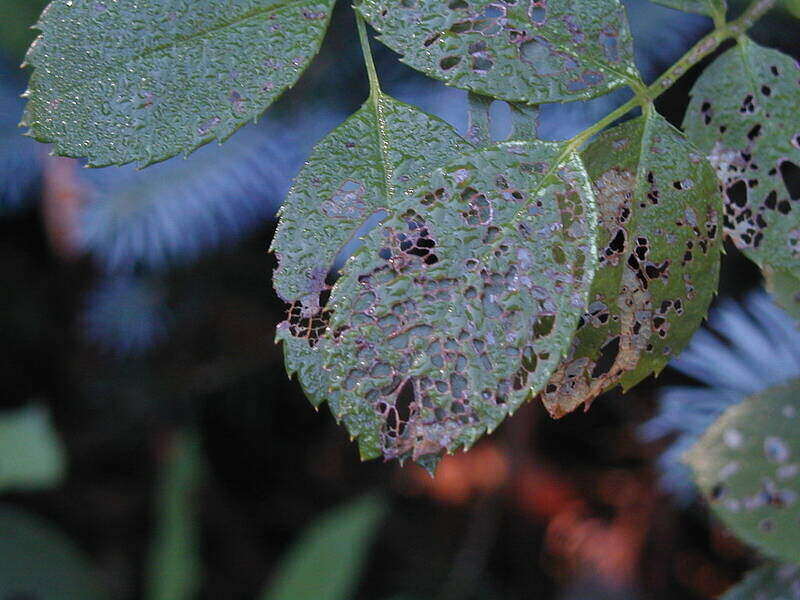
The IPM system works best when you catch pest infestations early on. Scout your garden periodically for signs of pest activity and damage. Don’t leave pest monitoring to chance:
- Monitor your garden for pests and signs of damage (eggs on the back of leaves, holes in leaves and produce, snail shells, etc.)
- Write down your findings in a journal.
- Take a magnifying glass with you. Details are important when identifying insect damage and plant diseases.
- Install yellow sticky cards around the garden. They attract insects and are an easy way to monitor small pests like aphids and mites.
Step 3: Set Realistic Expectations and an Action Threshold
You can expect to find some insects feeding on plants in any well-balanced, healthy ecosystem. It’s how nature works, and IPM uses nature to control pests. Don’t expect untouched crops, but pay attention to the extent of the damage and pest presence.
Set your action threshold when first planning your IPM strategies. According to the EPA, the action threshold is “a point at which pest populations or environmental conditions indicate that pest control action must be taken.” Decide how much pest presence or damage can be tolerated and when it’s time to switch from prevention to active pest control measures.
Step 4: Pest Prevention
It’s easier to prevent pests from setting camp than to remove them from your garden once infested. Now you know what pests find your crops attractive and why. Use this knowledge to put up preventive measures that keep them at bay.
There are many preventive IPM practices to try. You can start by improving your irrigation and fertilization habits, planting pest-resistant crops, and rotating cultures. Installing row covers is another common practice.
Step 5: Pest Control
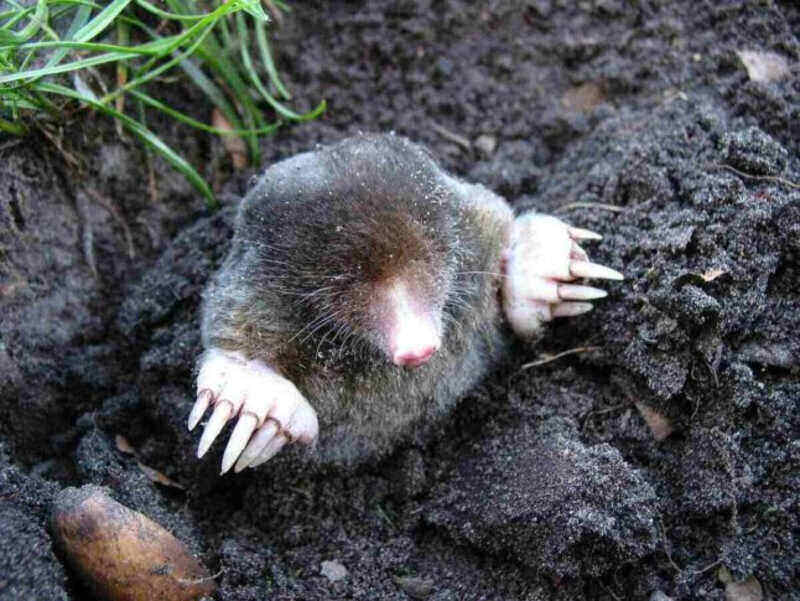
This step typically means the action threshold is reached, and you must implement pest control measures. By now you have enough information to choose the appropriate IPM method to use.
Small infestations can typically be solved with mechanical control, while more severe problems require biological or chemical control. We talk about these methods in detail in the IPM Practices section.
Step 6: Evaluate Results
How well did your control measures work? Did they control the pest, or did the pest persevere? At this stage of your IPM plan, you’ll need to determine whether to adjust the current control method or try a new one.
Step 7: Continue to Monitor and Implement IPM Measures
IPM is an ongoing process. It requires you to pay close attention to your garden’s health and subtle changes. After evaluating your control measures, continue to monitor your garden and respond to each pest issue.
Use what you’ve learned this year for next year’s garden. IPM is a trial-and-error system, and the first season is always the most difficult. Keep at it! You’ll see rewarding results in no time.
Integrated Pest Management Practices for Gardening
How does IPM control insects and other garden pests? IPM components and techniques focus on adjusting the ecosystem to keep pests at bay. It’s a mix of environmentally friendly practices grouped into five main categories:
- Cultural practices
- Habitat manipulation
- Mechanical control
- Biological control
- Chemical control
Cultural Practices

Experienced gardeners will find cultural control methods the easiest to apply. These IPM practices support the long-term prevention of pests and cover the proper care of your crops, from planting to harvesting. To prevent garden pests with cultural practices:
- Grow disease-resistant plants and pest-resistant varieties.
- Transplant healthy plant material. Before adding a new plant to your garden, ensure it doesn’t have an existing disease or bug infestation.
- Think sunlight and shade. Before you buy a plant or seeds, determine whether your garden’s location provides enough sunlight (or shade) for the plant to thrive.
- Test your soil. Choose plants that can thrive in your soil type (clay, sandy, etc.) or amend the soil to fit the plant.
- Practice crop rotation: Changing your crops’ place every few years reduces the risk of plant disease, weeds, and insect buildup.
- Fertilize and irrigate correctly: Overwatering and overfertilization support weeds, fungi, and insects. Poor soil and drought make plants vulnerable to attacks.
- Use mulch to preserve soil moisture and smother weeds. Mulch also reduces soil splash, which can land soilborne pathogens on lower leaves.
- Clean tools and equipment: After cutting diseased plants, disinfect tools with a solution of 10% chlorine bleach.
Habitat Manipulation
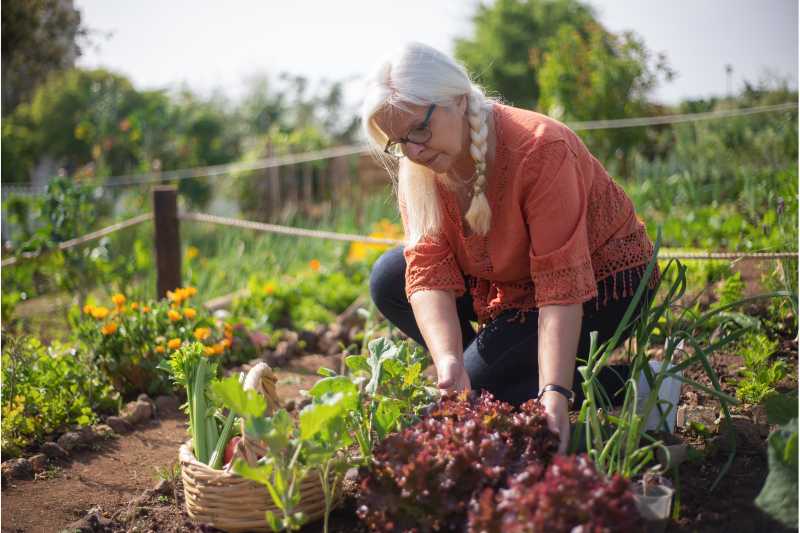
Manipulating the habitat has two goals. The first is to make your garden less attractive and accessible to pests. The second is to protect and support their natural enemies.
Similar to cultural practices, habitat manipulation is also a component of IPM with a preventive role. To keep pests at bay and good insects close, use these IPM methods:
- Keep the garden clean: Remove debris that can provide shelter and food for pests, including deep mulch, leaf piles, and ripped or fallen produce that can attract insects and rodents.
- Provide shelter and food to natural enemies: Grow flowering plants for pollen and nectar. Install hedgerows if you have space; they ensure winter shelter for predators like carabid beetles, staphylinid beetles, and spiders. Hang feeders in your trees to attract hummingbirds and other birds that can help you control pest insects.
- Practice companion planting: Mix pest-deterrent plants among your crops. Onion, garlic, marigolds, petunias, calendula, sage, and rosemary are among the most common. Choose proper companion plants that support your vegetables.
- Utilize trap plants: Trap plants attract pests away from your crops. Plant them as a barrier around the crops or interspersed among them. Examples of plant traps are chervil (attracts slugs) and blue Hubbard squash (attracts squash bugs and cucumber beetles).
- Plant cover crops after harvest to keep weeds from growing on your garden beds.
- Install exclusion barriers: Underground fences protect your garden from pocket gophers and other digging pests. Above-ground fences keep out hungry deer and large animals. Row covers protect your veggies from insects and spider mites.
Mechanical Control

Mechanical control uses physical or hands-on methods to remove garden pests. It works best with small infestations. Also known as physical control, it reduces the pest population enough to avoid damage. Mechanical control also leaves some pests behind to sustain the predator insects.
These methods are corrective and used when there’s already a pest problem. Examples of mechanical control include:
- Hand-pulling weeds from the garden.
- Handpicking mature insects, larvae, and pupae when large enough to see (e.g., potato beetles and tomato hornworms).
- Pruning infested plants and removing diseased parts.
- Tilling the soil to remove weeds.
- Setting traps to catch small animal pests, such as moles and gophers.
Biological Control
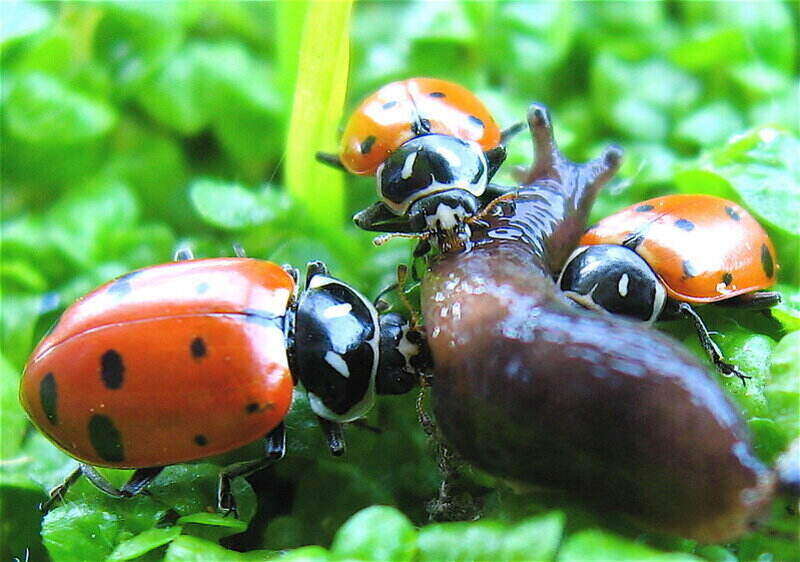
Biological control uses the pests’ natural enemies. There are two types of biological pest control in IPM:
Conservation: Your garden already has beneficial insects that can help control plant-damaging insects. Ladybugs, for example, are the best predators for aphids and whiteflies.
Support your native predators by:
- Using selective pesticides that don’t harm beneficial insects and reducing the use of pesticides
- Providing shelter and natural habitat for natural enemies
- Growing flowering plants that provide pollen and nectar, like sweet alyssum, sunflower, milkweed, fennel, or dill
Augmentation: Sometimes, the existing beneficial insects don’t act fast enough. In this case, you must add to the army of garden protectors. You can do this by buying microbial insecticides or multicellular pest enemies.
Microbial insecticides contain living pathogens like bacteria, fungi, protozoa, and viruses. They infect and kill the pests. Two common examples are:
- Bacillus thuringiensis (Bt) is a microbe in the soil. It kills Japanese beetle grubs and other pests in the early stages of their life cycles. Different Bt strains target different types of garden pests.
- Bacillus popollia is also known as milky spore disease. It is a bacterium that helps control Japanese beetle larvae in the garden’s soil.
Multicellular pest enemies you can buy for biological pest control are predators, parasite insects, and nematodes. You can buy them online or from the local garden store and set them free in your flower or veggie garden to control bad bugs.
- Predator insects eat some of the pests in your garden. Among the most useful are lady beetles, green lacewings, syrphid flies, ground beetles, aphid midges, soldier beetles, and spiders.
- Parasite insects lay eggs in or on host pest insects. When larvae hatch, they feed on the host, killing it. Two examples of beneficial insects acting as parasites are braconid wasps and tachinid flies. They control leaf-eating caterpillars and grasshoppers.
- Beneficial nematodes are microscopic roundworms that kill many soil-dwelling pests. Different species of nematodes attack different pests.
Pro tip: According to the University of California, you should release natural enemies in the garden early in the day or at night to avoid hot weather.
Another type of biological control is using diatomaceous earth. Diatomaceous earth, or DE, is a white powdery substance made from fossilized algae. Its food-grade form is an organic pesticide that kills common pests like Japanese beetles, spider mites, and fungus gnats.
Chemical Control
Pesticides are an appropriate IPM response when severe pest damage and other control measures fail. Start with the least harmful pesticides for the environment and beneficial insects, and leave the most aggressive as a last resort.
Here are the main chemical control products to consider:
- Botanical pesticides – contain toxins derived from plants or minerals
- Horticultural oils (neem, citrus, garlic oil) and insecticidal soaps
- Insect growth regulators (IGRs) – mimic insect hormones and disturb reproduction.
- Synthetic chemicals
How to use pesticides as part of your pest management strategy:
- Apply selective pesticides instead of broad-spectrum pesticides. Selective pesticides only kill the target pest while protecting beneficial organisms.
- Perform spot treatment instead of broadcast treatments to avoid harming beneficial insects.
- Read and follow the pesticide’s labeled instructions.
- Wear the proper safety gear, including chemical-resistant gloves, long pants, and long sleeves.
- Correctly identify the pest insects and apply the pesticide that targets that particular damaging insect.
Pros and Cons of Integrated Pest Management
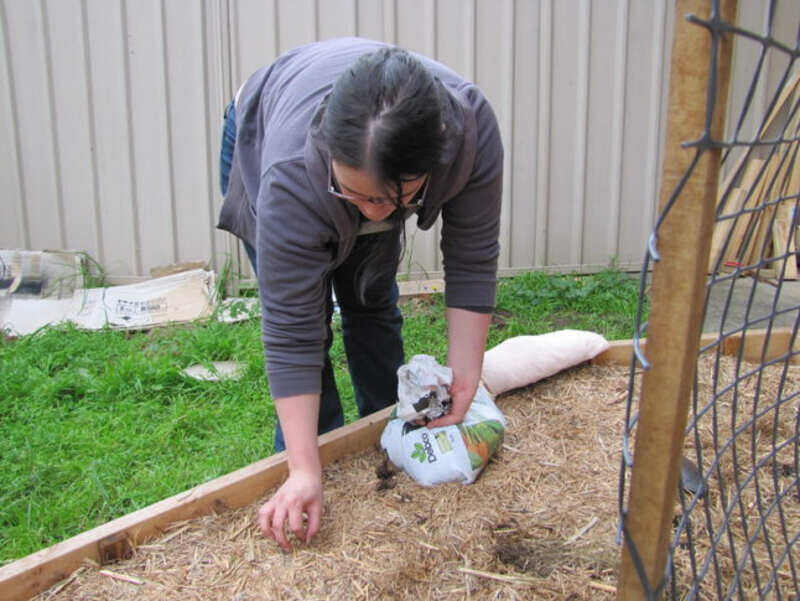
Integrated Pest Management provides a long-term solution to pest problems. It’s also eco-friendly and prioritizes the safety of humans, pets, and wildlife. But IPM does have its drawbacks. For starters, you must build a complex understanding of your garden.
Take a look at the following pros and cons to see if IPM is suitable for you:
| Pros | Cons |
| ✓ Slower development of pesticide resistance ✓ Minimal pollution ✓ Reduces risk to people and pets ✓ Balances ecosystems and protects biodiversity ✓ Saves money in the long run ✓ Long-term prevention. Infestations are less likely to occur | ✗ Takes time to learn ✗ Hefty upfront cost (sometimes) ✗ Physically demanding ✗ Trial and error |
Integrated Pest Management for the Home
Your garden is not the only place where you can use IPM. Here are some simple ways to practice IPM in your home:
- Store food in airtight containers
- Wipe counters after preparing food
- Wipe the dining table after eating
- Sweep the kitchen floors at the end of the day
- Mop up food spills
- Store trash and compost in sealed containers
- Set sticky traps and bait stations where pest activity is high
Integrated Pest Management for Your Lawn
Is your lawn suffering from fungal diseases or insect pests? Take back your yard with an IPM program that focuses on good lawn care. The healthier your grass, the less likely it will succumb to pests.
Practice IPM for the lawn by implementing the following maintenance practices:
- Mow the grass correctly
- Fertilize only when necessary
- Remove thick thatch and core aerate
- Keep your lawn clear of dead leaves and other debris
- Overseed to smother weeds
- Test the soil and amend to keep the grass healthy
FAQ About Integrated Pest Management
Why Should I Avoid Using Pesticides?
Relying solely on pesticides isn’t a sustainable way to control pests. Pesticides offer a quick and convenient solution, but they don’t fix the root cause of a pest problem. Pesticides have other disadvantages, too:
- Non-selective pesticides can harm the environment by targeting beneficial insects and other wildlife.
- Pesticides can pollute stormwater runoff and enter local bodies of water.
- The misapplication of pesticides can be harmful to human health.
What Are Common Insect Pests That Occur in the Garden?
When monitoring your home garden for pest activity, here are some common insect pests to look out for:
- Slugs
- Aphids
- Whiteflies
- Tomato hornworms
- Colorado potato beetles
- June beetles
- Japanese beetles
Are IPM and Organic Pest Control Methods the Same Thing?
No, IPM is not the same as organic pest control, but it includes pest control measures that can be used in organic gardening. Most of the habitat manipulation and biological control options can qualify as organic.
When to Hire a Professional
While you’re focused on darkening your green thumb, don’t let other distractions get in the way. Find a landscape professional on LawnStarter to take some of the weekend chores off your to-do list. From mowing the grass to aerating the soil, a lawn care pro can handle your turf tasks while you put the new Integrated Pest Management to work in your garden.
Main Photo Credit: Rche23 / Wikimedia Commons / CC BY-SA 4.0
